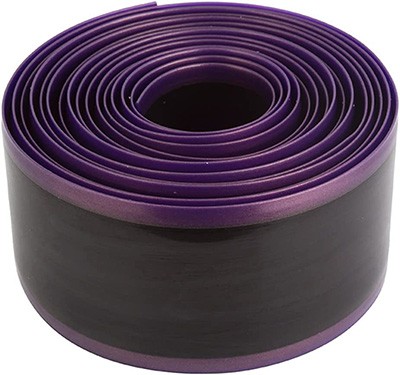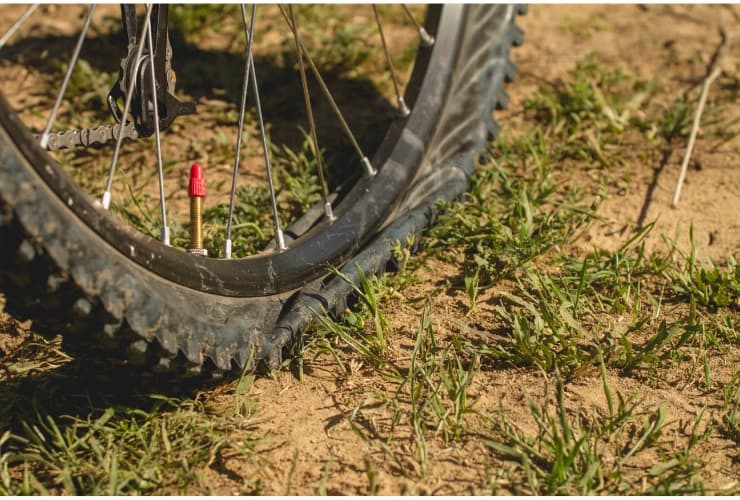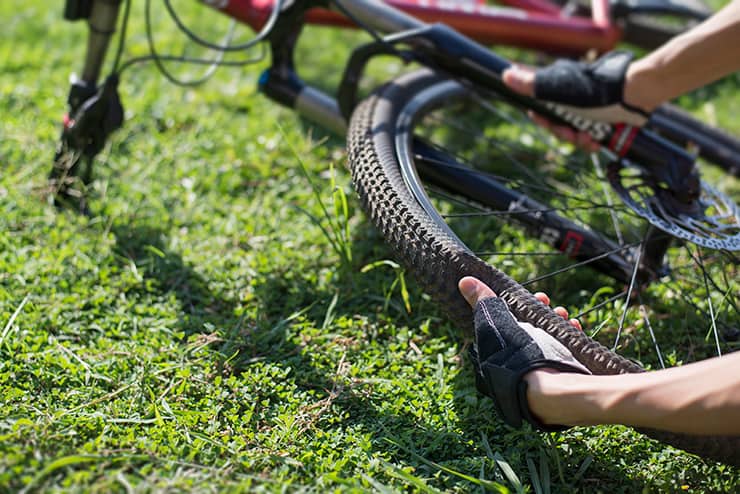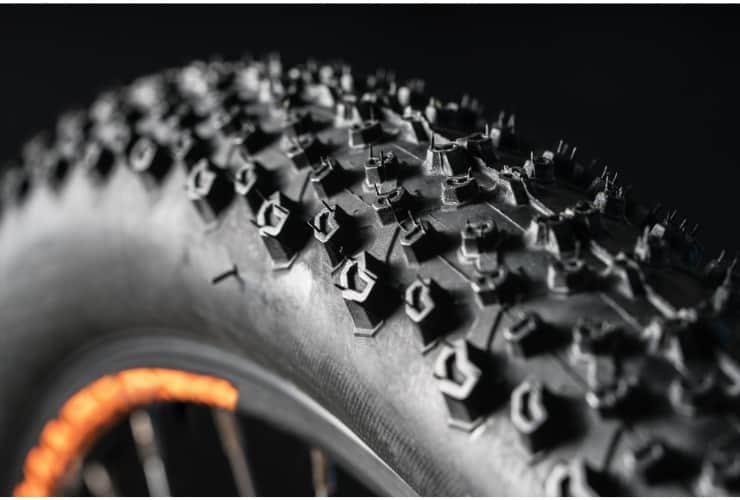Cycling is such a fun way to commute or explore and get a thorough workout while you’re at it. But sometimes, a puncture can easily ruin what was supposed to be a beautiful ride–every cyclist knows the feeling. Besides, there’s never a good time to get one, especially not when you’re commuting to work or trying not to get caught in the rain.
Punctures are part of the cycling experience. But who wouldn’t want to have fewer punctures? Puncture resistant bike tires are thicker or have extra protective material, making them harder to puncture.
The idea of a puncture resistant tire seems excellent, but does it work? Are they worth the money? I’ll be answering these and more questions here to help you understand what puncture resistant tires are.
Key Takeaways
- Puncture resistant bike tires are designed to reduce the risk of getting a flat by making the tire thicker, adding a protective layer, or using a tubeless system.
- Puncture resistant tires have many benefits, such as saving time and money on repairs, increasing confidence and comfort on the road, and lowering rolling resistance and improving speed.
- Puncture resistant tires are not puncture-proof, meaning they can still get punctured by strong or sharp objects. The only puncture-proof option is airless tires, which are solid and do not require air.
- Puncture resistant tires have some drawbacks–more expensive, heavier, harder to install, and less grippy than regular tires.
- The choice of puncture resistant tires depends on personal preferences and riding conditions. Some factors to consider are tire width, TPI (threads per inch), and protective material.
What Are Puncture Resistant Bike Tires?
The clue is in the name. Puncture resistant bicycle tires are designed such that they don’t puncture easily.
There are different ways to achieve that. One of them is to make the tire thicker so that sharp objects can’t penetrate. And even if an object like glass penetrates the tire, there are lower chances of it getting to the inner tube.
Another way to achieve increased puncture resistance is by adding another protective layer. This could be something like Kevlar or just a tire liner.
Other manufacturers, especially mountain bike manufacturers, have resorted to tubeless tires.
Let’s take a closer look at each of these options.
Tubeless Tires
Traditionally, all bike tires had an inner tube–a seemingly simple part of your bike with a very important function. After a while, some manufacturers started doing away with the tube, giving rise to tubeless tires. At first, they were common in mountain bikes but now you’ll find them in road bikes too.
The connection between a tire and the rim is not air-tight, which is why you need an inner tube. So how does a tubeless tire work and how does this relate to it being puncture resistant?
The tire locks tightly onto the rim, which is entirely airtight with the tire, and valve stem. On top of all that, a special sealant is applied to the tire. It maintains its liquid form inside the tire, sealing any potential puncture holes.
As you can imagine, the system is quite effective and provides impressive puncture resistance.
Not having an inner tube means much fewer chances of getting a pinch flat, even when cycling with the tires at a lower pressure.
An Additional Protective Layer
Another way to make a tire resistant to punctures is to add an extra material layer to make the tire much tougher. Different manufacturers use different materials, but the most common one I’ve seen is Kevlar.
Kevlar is unbelievably strong (it’s used to make bullet-proof vests), so you’ll have little to worry about when riding over sharp objects, including nails and glass.
Other than Kevlar, there are liners that you can insert between your inner tubes and tires for added puncture protection. One good example is the Mr. Tuffy Bike Tire Liner. Many cyclists swear by liners because they are easy to install and greatly reduce the risk of getting a flat.
These liners prevent sharp objects like glass from getting to the inner tube.

TPI and Puncture Resistance
The TPI of a bike tire can make it more resistant to punctures, all other things being equal.
In simple terms, bicycle tire casings are made using a woven fabric with nylon threads of fibers. The number of threads per inch determines the density of this fabric. The more threads per inch, the denser the material.
With this understanding, you may think a higher TPI number is better because the tire is denser. But it’s actually the opposite. In high TPI tires, manufacturers use thinner fibers and less rubber to hold everything together. In low TPI tires, the fibers or threads are much thicker, and there’s more rubber. This increases the tire’s durability.
So a low TPI tire is likely to be more reliable than a high TPI tire–again, all else being equal.
What About Puncture-Proof Tires?
A puncture-resistant tire is not the same as a puncture-proof tire. Bike tires are pneumatic, meaning they’re filled with air, so the chances of getting a flat will always be there.
However, I have started seeing solid bicycle tires made of materials like foam. They’re the way to go if you want to avoid punctures completely.
Airless tires never go flat, and they will save you a lot of trouble. Cyclists will tell you that, for some reason, punctures tend to happen at the worst possible times (not that there’s ever a good time to get a puncture).
You also don’t have to carry a repair kit, spare tube, or pump every time you go out with your bike.
So why isn’t everyone using airless tires? Unfortunately, puncture-proof tires have high rolling resistance and can be quite slow. They’re also heavy and not as grippy as pneumatic tires.
These are important factors for most riders; they wouldn’t sacrifice them just to avoid flat tires. That makes puncture resistant tires the better option.

Do Puncture Resistant Tires Work?
Yes, puncture resistant tires work in that they will reduce the number of punctures you will have.
Thicker bicycle tires are harder to penetrate. If you ride over a piece of glass, there’s a good chance that it won’t get to the tube. The same applies when you have a puncture-proof belt or other protective layers. It will protect your inner tube.
However, you should know that puncture resistance doesn’t translate to puncture proof. These options will reduce the risk of having a puncture, but you can still get one if the object is sharp and strong enough.
The Benefits of Puncture Resistant Tires
If you’re still on the fence about switching from regular tires, perhaps this will change your mind. Here’s why you might want to consider getting yourself puncture resistant tires in the future:
Can Save You Money in the Long Run
If you get a lot of punctures, the costs will quickly add up. Choosing a puncture-resistant tire or lining may mean fewer punctures. And even though some of them may not be cheap at first–like buying new thicker tires–you’ll spend less on repairs and replacements.
Cycle Rough Terrain With Confidence
When you have tubeless tires or puncture protection, you can cycle with confidence regardless of the condition of the road. You don’t have to hold your breath every time you cycle over something sharp, hoping and praying it didn’t get to your tube. Or try to swerve whenever you see a piece of glass on your path.
Fewer Punctures to Deal With
No cyclist likes to cut their ride short to fix a puncture. It’s a waste of precious time you could spend having fun or getting to where you’re going.
With puncture-resistant tires, you’ll have fewer of these dreaded moments. And if you go the airless route, you never have to worry about punctures at all!
Comfort at Lower Pressure
Tubeless tires run well at lower pressure, without the risk of a pinch flat. You can, therefore, enjoy the benefits of lower pressures which include comfort and increased traction. Tires at low pressure have better shock absorption, which is great when cycling on a bumpy road.
A tubeless system also translates to lower rolling resistance and, as a result, better speed.
The Cons of Puncture Resistant Tires

Tires with puncture resistance have many benefits, no doubt. But they’re not without downsides.
Expensive to Buy
Changing to tubeless tires or choosing to buy a new set of puncture-resistant tires is going to cost you. So initially, you will have to spend some money. However, a good set of tires will last a long time, with much fewer punctures, so I’d say it’s worth it.
Can Be Less Comfortable
This mostly goes for airless tires. They have a higher rolling resistance, which may slow you down and force you to use more energy. This can be frustrating, especially if you mainly use your bike to commute to work.
Most airless tires also have noticeably less suspension.
Might Be Heavier
Increased tire thickness will translate to a heavier tire. You may find that it takes more effort to pedal your bicycle and you may not be able to cycle as fast. For some people, this is a small price to pay to save themselves from the pain of frequent punctures.
Not Easy to Install
Installing puncture-proof tires is not a simple process and it can be quite frustrating if you don’t know what you’re doing. Most cyclists prefer to have a professional do it. Tubeless tires are the same, especially because you’ll most likely need new rims too that work best with the tires.
For DIY enthusiasts, puncture resistant liners are the easier choice.
Frequently Asked Questions About Puncture Resistant Bike Tires
Can You Buy Bike Tires That Don’t Puncture?
Yes, you can buy bike tires that don’t puncture. They’re called airless tires. These tires are solid and made of foam. They don’t require air, so you never have to worry about the dreaded flat.
Are Puncture Resistant Tires Worth It?
Yes, puncture resistant tires are worth it if you get good ones. Cyclists who get frequent punctures will benefit from having a tire that’s harder to penetrate. It could save them both time and money.
Are Tubeless Bike Tires Puncture Proof?
No, tubeless bike tires are not puncture-proof. If they come into contact with a strong, sharp object, they’ll get punctured. They are, however, puncture-resistant. They have a sealant, and they self-heal if you get any small punctures while cycling.
Which Is Better, Tubeless or With Tube?
This all comes down to personal preferences. Both tubeless tires and tires with a tube have their pros and cons. Most cyclists will tell you that tubeless tires are better because you have fewer punctures and offer a better riding experience.
Do Road Bike Tires Puncture Easily?
While thinner road bikes are grippy and fast with less rolling resistance, they can indeed be more prone to punctures.
Are Wider Bike Tires More Puncture Resistant?
Wider tires can be more puncture-resistant if they are thicker. Plus, you can run wider tires at lower pressures, increasing their puncture resistance.
Wrapping Up
Punctures aren’t fun, and any cyclist would be happy to have fewer flats.
Puncture resistant bike tires seek to achieve this in different ways. Some manufacturers will make their tires thicker, making it harder for something like glass or a thorn to penetrate. Others will add another layer of protective material, like Kevlar.
You can make your tires puncture resistant as well by using a tire liner like Mr Tuffy. This is a simpler and more affordable choice.
Tubeless bicycle tires can also be considered puncture resistant. They don’t have a tube and their sealant will seal any leaks that the tire gets while you’re cycling.
There’s the option of solid tires too, which are puncture-proof. This means that you never have to worry about flat tires again in your life.

